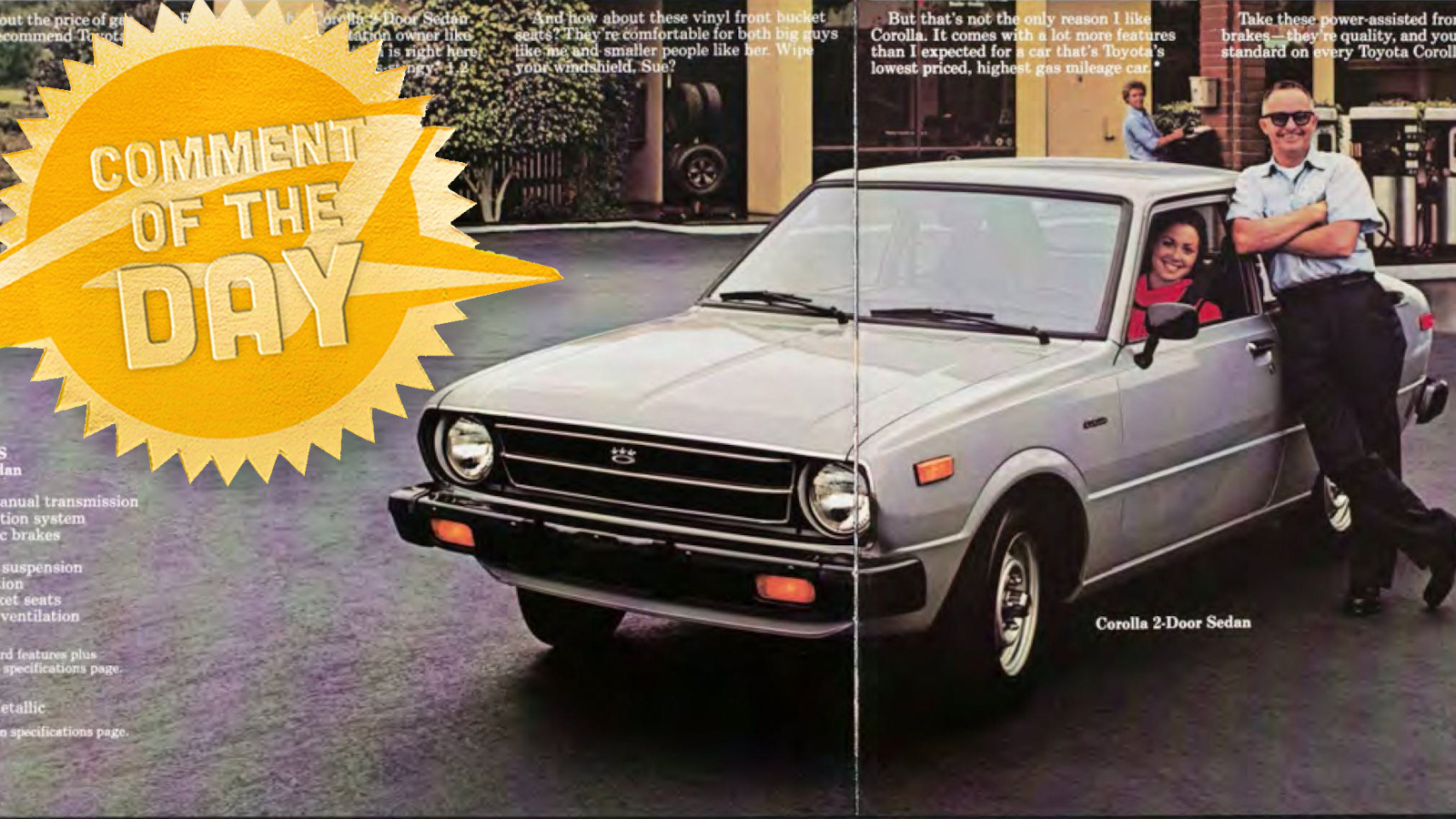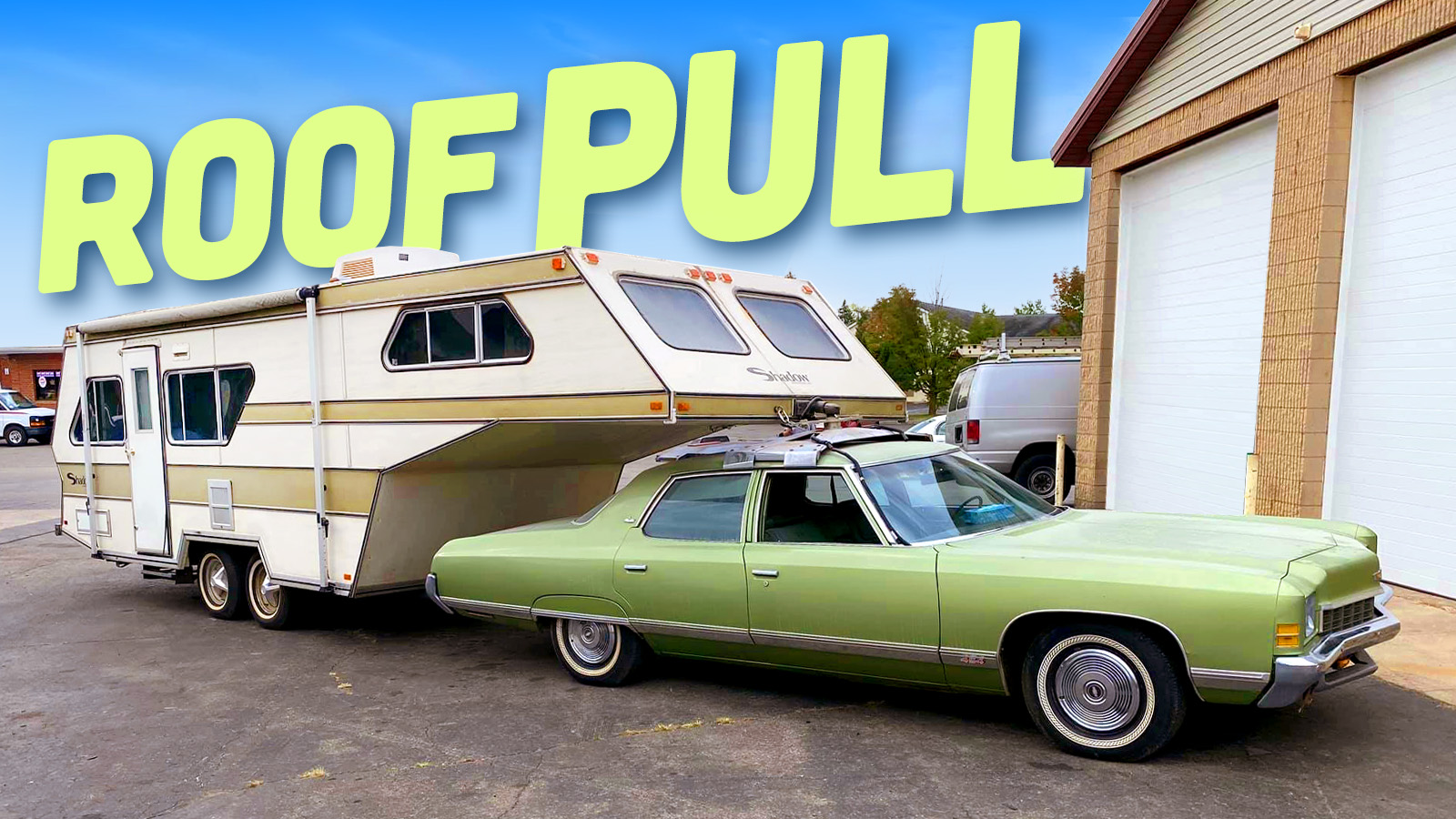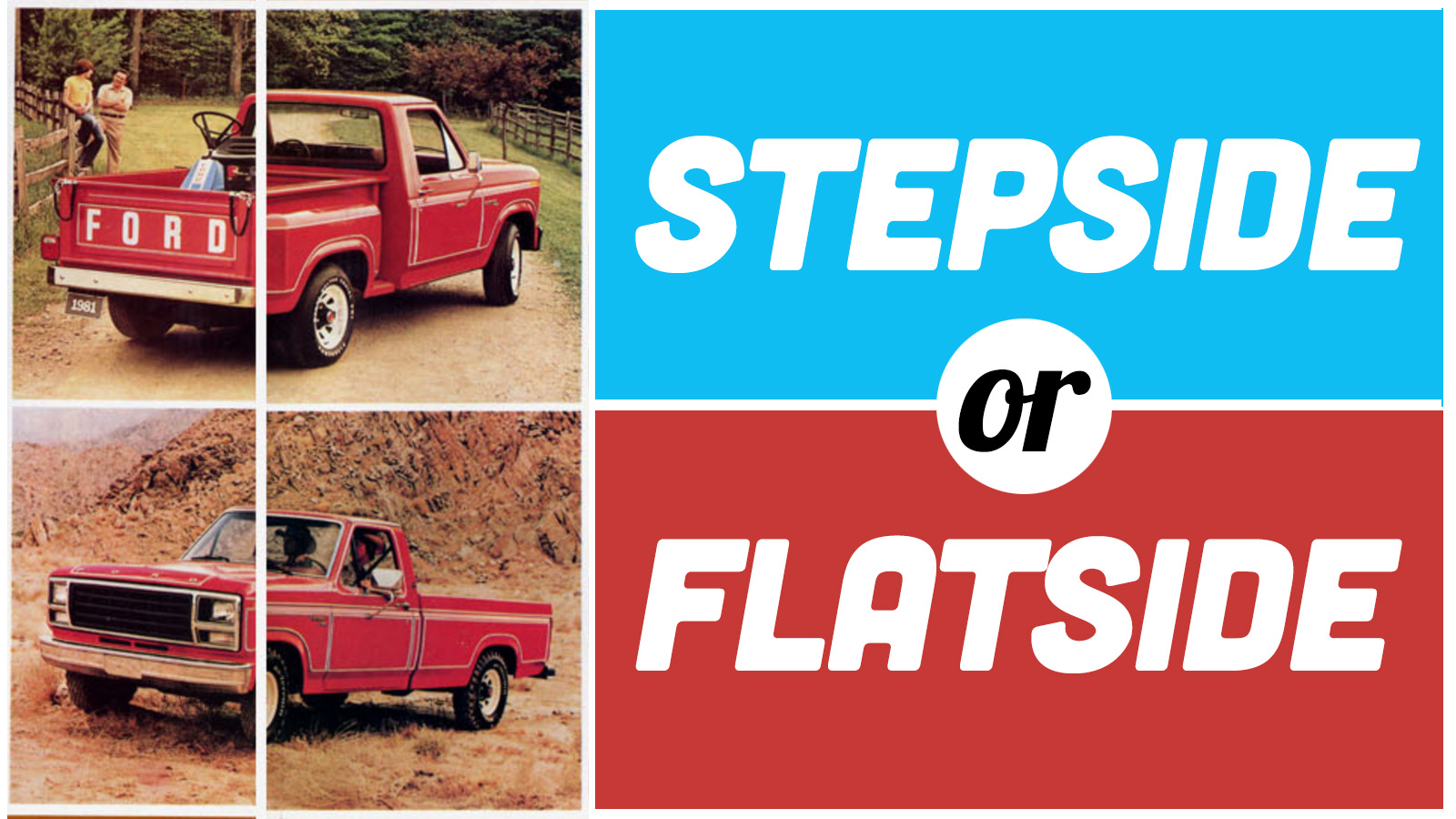The name Airstream is associated with sleek aluminum riveted travel trailers designed to stand the test of time. Few other campers can match an Airstream’s style or prestige. But for a brief blip of time, there was a chance that Airstream could have done something entirely different. Airstream experimented with fiberglass decades before others. The experiment was supposed to innovate the RV industry, but didn’t. This is the Wally Bee, the one-of-one 1950s fiberglass cutie that could have could have changed RV history.
Airstream has been known for its iconic “silver bullet” trailers for long enough that you would be forgiven for thinking that’s all the company has ever been interested in building. However, throughout its near century of history, the brand has experimented more often than many other RV brands. Airstream once sold fifth-wheel trailers and once experimented with blocky painted aluminum rather than its legendary look. Airstream has built diesel pusher motorhomes, giant funeral cars, and tiny shuttle buses.
Perhaps the weirdest Airstream of the modern day is the 2018 Nest, an all-fiberglass curiosity that was nothing like the typical Airstream. That’s because it wasn’t even really an Airstream. Instead, Airstream bought the Nest Caravan Company and slapped Airstream branding on Nest’s overall design.

In that article two years ago, I briefly mentioned the Wally Bee, one of the only times Airstream built its own fiberglass trailer. Back then, I failed to illustrate how close Airstream came to almost starting the fiberglass trailer revolution decades early.
This story takes us back to the early days of Airstream, back when its founder, Wally Byam, was still calling the shots. Wally started his company on the wheels of trailers built out of plywood. The Airstream Torpedo Car Cruiser was nominally a teardrop, but Wally had the idea to give the trailer a lower floor, allowing for enough headroom to make for a teardrop that buyers could stand in.

As Airstream notes, Wally was always into finding ways he could improve his trailers. Perhaps the most important event in Airstream history happened in the 1930s when Wally worked for airplane constructor Hawley Bowlus, who leveraged his experience working on aircraft like the famed Spirit of St. Louis aircraft to create a riveted aluminum masterpiece called the Bowlus Road Chief. The Road Chief was a revelation with its aluminum monocoque construction. Wally was inspired by the Road Chief and returned to his shop in an effort to make a better version of the Road Chief. The rest is history.
Now, Wally could have just built the aluminum Airstream Clipper and called it a day, but he was never satisfied with just one design. Over the years, Airstream trailers would evolve. Early trailers had central spines that were replaced with ladder frames. End caps were once built with several pie-shaped pieces of aluminum and Airstream figured out how to save on costs and complexity with more refined caps. The trailers also got bigger and more luxurious. Airstream is often credited with creating the first production self-contained trailer – that’s one that’s capable of running its systems while boondocking – with the 1958 “Trade Wind.”
Ditching The Aluminum
However, before works like the Trade Wind, before the panoramic front window, and before even the weird painted Argosy, Airstream had big plans.

In the early 1950s, Wally Byam wanted to find a way to cut down on the weight and the cost of his famed trailers. That’s when Danish engineer Marius Hansen came around. Hansen lived across the street from the Byams in Los Angeles and had a thing for making giant sculptures. But it was his interest in fiberglass that caught Wally’s attention.
Glass fibers have been used in different applications for centuries. The first known patent for fiberglass went to French inventor Ignace Dubus-Bonnel, who invented a glass fiber material in 1836 but couldn’t figure out how to mass produce it. The modern form of fiberglass was invented in 1932 by Dale Kleist of the Owens-Corning Company. Plastic fiberglass, as it was called, was a wonder material. Airstream notes that the first fiberglass boat was made by Ray Greene of Owens Corning in just 1937 and it wasn’t long before people started getting more ambitious.

Marius often talked with Wally about how fiberglass could be used to make a camper. He got Wally on board, and in 1952 he was officially hired on at Airstream. Later that year, Marius and Airstream made their first fiberglass trailer, from my previous piece:
In 1952, Airstream built its first fiberglass campers. Airstream’s use of fiberglass called for end caps that were single, molded pieces. Normally, those panels would be multiple pieces of aluminum. The trailer’s walls would also be made out of fiberglass panels. Of course, these were Airstreams, so aluminum had to go somewhere. In this case, aluminum panels were affixed to the interior fiberglass walls.

These campers were pretty innovative too, outside of just being made out of fiberglass. A famous fiberglass Airstream was the 33-foot “Commodore” built for Cornelius “Neil” Vanderbilt, Jr. The trailer, which was named after Vanderbilt’s grandfather, was used as a mobile office during the 1952 Democratic and Republican National Conventions in Chicago. There, Vanderbilt penned articles while Wally promoted the fiberglass trailer.
No expense was spared in building the Commodore. Unlike more modern fiberglass trailers, the Commodore wasn’t constructed with a body that could hold itself up. Instead, under the fiberglass were aluminum bows for structural support and an aluminum floor for a solid foundation.

Airstream notes that this thing was more luxurious than some of the RVs of today:
The one-of-a-kind Airstream also featured a plexiglass skylight, a TV, a short-wave two-way phone service, a bar, and a library. The Airstream was used to entertain elite visitors to the Conventions. During the one-week break between each Convention, Wally and his right-hand man, Andy Charles, left Vanderbilt and the Commodore to travel along the Midwest in search of a factory that would be suitable for the company’s expansion. The two traveled through Illinois, Indiana, and Ohio before they discovered a vacant factory in Jackson Center, Ohio, launching the next chapter in Airstream history.
Airstream wasn’t the only company experimenting with fiberglass campers in the 1950s. Other examples of efforts in the 1950s include the Kom-Pak Sportsman – a camper our Beau Boeckmann owns – and the PleasureCraft. However, none of these trailers were commercially viable for very long. But why?

Wally found out that there were limitations to fiberglass. He intended on fiberglass being a solution to cutting down on weight, but Airstream’s fiberglass trailers weighed the same as its aluminum trailers. But what was worse was the price. A fiberglass Airstream was significantly more expensive than an aluminum model, signaling that Wally’s efforts were a total failure. Airstream’s advertising shows that the fiberglass ‘Streams were $200 more expensive. It’s unknown what the true cost to Airstream was, but Airstream quietly discontinued its fiberglass line soon after.
You’ve probably noticed that thus far the first fiberglass campers looked just like regular Airstreams. That’s when an idea struck Wally. He was convinced fiberglass could revolutionize the market, but maybe he was going about it the wrong way. The next fiberglass experiment would be something entirely different, and an entirely new camper. It would resemble an egg, be substantially smaller, and be targeted at families with smaller cars going camping on a weekend. Sound familiar?

In the mid- to late-1950s, the Wally Bee was constructed. According to Airstream, the Wally Bee was comprised of two fiberglass tubs – an upper section and a lower section – joined together. Marius tried his hardest to prove the Wally Bee’s worth; from Airstream:
A company memo from 1962 indicates Airstream was investigating the feasibility of “the Easter Egg program” with a study of Marius Hansen’s fiberglass prototype. In an apparent effort to prove the Wally Bee’s road-worthiness, Marius set off in a Wally Bee on the 1962 Central American Caravan. A postcard he sent from Nicaragua that year locates the Wally Bee near the capital of Managua. His trial run was apparently not enough to inspire confidence in the design, though, and the Wally Bee disappeared from records only to resurface a decade later in a Texas backyard.
I’d love to see examples of the magazines that featured the Wally Bee, but I was unable to dredge up any mentions from all the digitized classic magazines that I searched. How many Wally Bees were constructed is unclear, but it’s believed that there was more than one. This matters because the sole surviving example technically wasn’t a real camper.

The Wally Bee you see in the vintage photos probably wasn’t a functional camper. Windows with curtains behind them are visible, but those lines that look like the gap around a door are just tape. It’s unclear if the incomplete Wally Bee had an interior, but I doubt it since there would have been no way to access it. That also makes Marius’s trip a bit silly without further context. I hope the Wally Bee he had was a real one. If not, then it must have been bonkers to pull a camper across Central America but not actually be able to sleep in it.
Sadly, the Wally Bee suffered from the same problem as the bigger fiberglass Airstreams. The company just couldn’t figure out how to make them without charging an astronomical amount of money. Every Wally Bee is believed to have been lost but just one, the one that wasn’t really a camper.

What was worse was what happened to the last Wally Bee after Airstream was done playing around with it. Airstream employees Toni and Art Ruiz wanted to move from California to Texas. They didn’t have a trailer to help them move their home, so they acquired the Wally Bee. Of course, the trailer had no way door, so the Ruiz couple cut a giant hole in the back so they could fill it up with their belongings.
The trailer would make the trip to Texas and then spend the next three decades wasting away in the Ruiz family’s backyard. Part of that was because nobody bothered to keep up with the trailer after it disappeared from California. According to the book Vintage Trailer Voyeur, a publication of Airstream Life in 2007 indicated that not even Airstream itself knew where the trailer was.
Thankfully, the trailer now lives a better life than it ever has. In 2008, Luke Bernander rescued the one and only Wally Bee. He then pored over photos of the old Wally Bees and leveraged the knowledge of Airstream fans to restore the Wally Bee to what one of its siblings would have looked like in the late 1950s. Yep, that means it has a real door and an interior now. Luke still owns the trailer today, but it’s currently on display at the Airstream Heritage Center in Jackson Center, Ohio.

Check out the interior photos sent to us by reader 3WiperB:


Amazingly, it’s believed that the Wally Bee isn’t just the only surviving tiny prototype trailer, but the only surviving trailer of all of Airstream’s fiberglass experiments of the 1950s. There have been rumors of others, but nothing concrete.
With only one left in existence, the Wally Bee is certainly the world’s rarest Airstream. It could have also been one of the most important. Had Airstream figured out how to mass-produce fiberglass trailers at an affordable cost, it could have jump-started the fiberglass trailer movement over a decade before Boler and Scamp. I then like to think about what could have happened if these really took off. What would have been the chance that the most popular Airstream would be fiberglass and not aluminum?
It’s hard to say just how things could have been different, but it’s fascinating to see that Airstream at least tried. With the Airstream eStream no longer going into production it’s going to be interesting to see what the company comes up with next.










As a kid growing up in the late seventies and eighties, and being a child in a boating community on a riverside, I can tell you one, this thing surely smells awesome. A fiberglass body. Oh man, I would sleep in there, nose to the wall, and feel like a kid again.
I wonder why you’d go to the trouble to add an interior (not historic) and then leave the walls “historically unfinished?” I’m sure it’s not, but it just looks like mildew in the pictures. Considering how nice everything else they added looks, I find this an odd choice.
I wonder what the curb weight is? It seems to actually have better space efficiency than most fiberglass egg trailers, and I really wish birch veneer plywood interiors would come back in style – it’s a simple material and not that expensive, but it looks so rich and warm with a glossy varnish
Great find, this could have sent Airstream, and trailer making in a different direction. I wonder if the early makers like Boler had seen the Wally Bee or if it was convergergent evolution. The basic concept of two tubs glued together is an obvious way to build a trailer.
I think it is beautiful. I love it. Over here in Europe we have had more fiberglass campers over the years. I have a ’71 Constructam Comet which has a fiberglass top half, and a aluminium sheet on metal frame bottom half. This is actually my combination (https://images.app.goo.gl/XHHwc6uavcsg6Dyf9).
In the Netherlands you had the company BIOD which produced campers with two fiberglass halves put together, the same as Airstream tried with Wally. (https://images.app.goo.gl/1bbfZTEFvsPxADRb7). And the Italian company Lander (https://images.app.goo.gl/tUnXfp2QqAdzxwq29)
Bring back white-walls
I saw this last year in the Airstream factory museum. I tossed a couple photos, including the interior in the Discord under tips and news. They had a funeral coach there when I went through too. It’s a great tour and museum if you are ever passing through Jackson Center, OH.